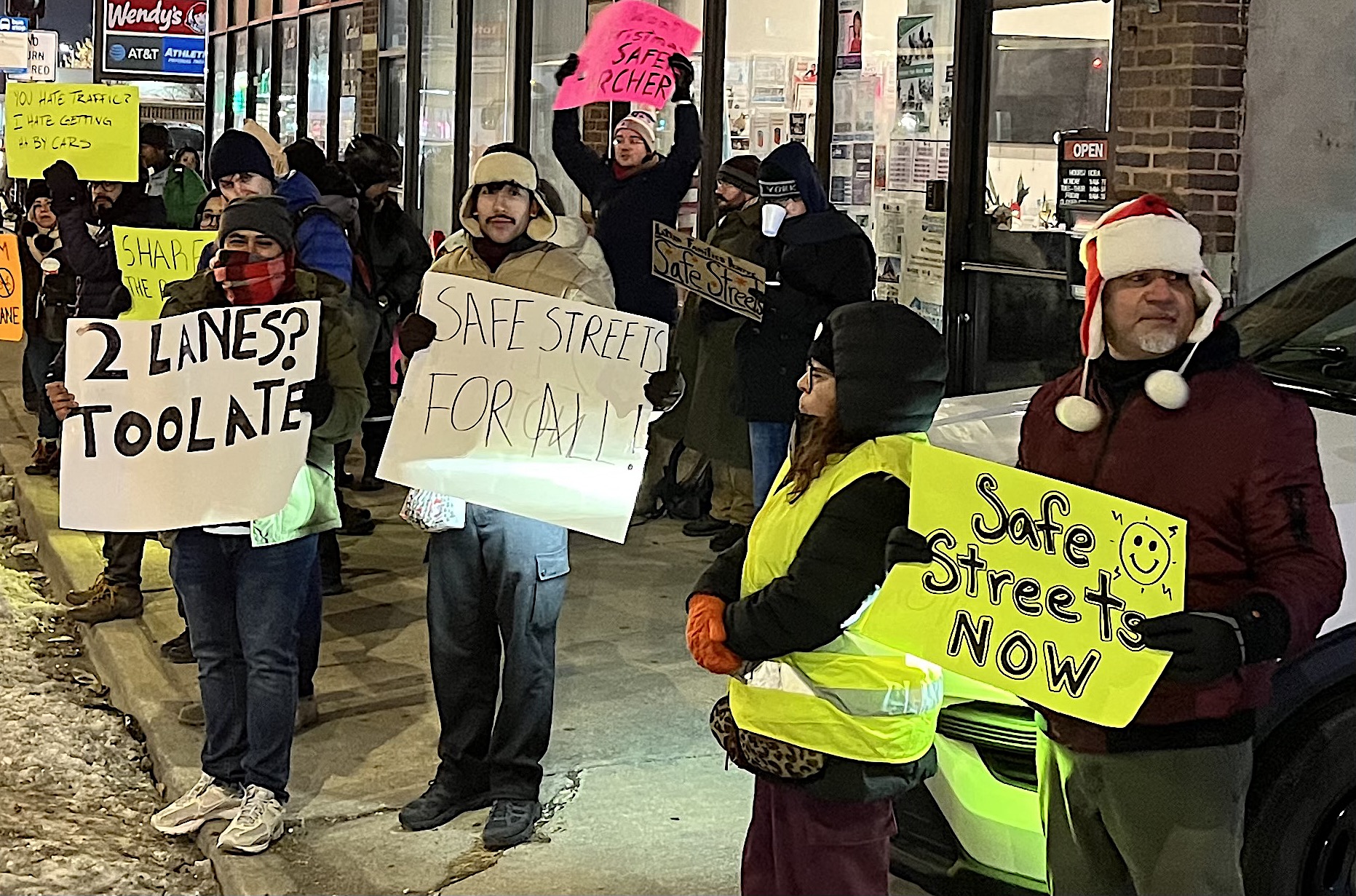This is an excerpt from "Bikenomics: How Bicycling Can Save the Economy," by Elly Blue (Microcosm Publishing, December 1, 2013, bikenomics.com). See our interview with Elly from spring 2013.
Car exhaust is no laughing matter. Nearly half of residents in major urban areas in North America live close enough to highways and other large roads to experience serious problems as a result. Exposure to car emissions worsens and may cause asthma and other lung conditions, including lung cancer. There is evidence to suggest that it leads to hardening of the arteries and thence to heart disease. One study has found an increased risk of heart attacks while in traffic, either while driving or using public transportation. Breathing car exhaust may increase the risk of developing diabetes; it is certain, however, that people who have diabetes suffer disproportionately from the effects of air pollution.
The worst effects of breathing polluted air are experienced where it is densest: in traffic. Spending time on and near highways, freeways, and other busy roads is terrible for your health. How near is a question that is still being studied, but researchers believe that the effects are worst within either a fifth or a third of a mile. People in cars or buses are exposed to considerably more air pollution, perhaps because of, rather than despite, being in a closed space. People walking and bicycling on or next to roads breathe more air, but inhale somewhat less pollution; and cyclists have been found to have even less risk if they are on paths that are separated from the road.
The burdens that come with air pollution are, as with so much else, not evenly distributed. Poverty and ethnicity are both major factors that determine the amount of car exhaust we breathe. Housing near a source of pollution, such as a freeway, busy road, or industrial site is generally where people with low incomes are able to live.
Children are particularly at risk, beginning before birth. Air pollution affects prenatal development, and a recent study suggests that exposure to air pollution such as diesel particulates, mercury, and lead may put a child at risk for autism. A separate study found double the rate of autism among children who live within 1,000 feet of a freeway in several major cities. Air pollution has also been linked, tentatively, to hyperactivity in kids and childhood cancers. And kids who have high daily exposure to car exhaust score lower on intelligence tests and have more depression, anxiety, and attention problems. This isn’t just a matter of where children live -- one in three public schools in the U.S. are within a quarter mile of a highway, well within the danger zone.
Traffic jams and air pollution are often talked about at once, as though one inevitably causes the other, and that by fixing one you can also solve the other.
It doesn’t quite work that way.
When a road has heavy traffic, more pollution hovers around it. We tackle this problem in every way possible from the supply side, with regulations on tailpipe technology, subsidies for hybrid and electric cars. And we try to solve pollution in the same way we deal with congestion -- by building bigger roads. The current federal transportation bill explicitly offers clean air funds to pay for road widening projects that can show reduced congestion -- no matter how faulty the long-term assumptions.
But even the short-term congestion relief -- a few minutes each day -- doesn’t fix pollution. When people can drive faster, they drive farther. Induced demand means that if a road does its job as a development tool, the long term impact of pollution -- both on that road and on surface streets that it feeds into -- goes up astronomically. These short-term reprieves amount to expensive long-term investments in much greater air quality problems, as the freeway projects of the past have demonstrated.
Also, slow traffic doesn’t necessarily mean more pollution. Hyper-milers -- people who compete to eke the best gas mileage possible out of their cars -- know this well. You burn the least fuel, and thus pollute the least, when you drive at a slow speed, providing a steady flow of gas to the engine or, even better, coasting. The biggest cause of pollution is the traffic dance of constantly speeding up, slowing down, braking, and idling. In urban areas particularly, the faster the speed limit or the feel of the street, the more starting and stopping drivers do. When traffic speeds slow down overall, the flow becomes smoother, and the result is less pollution. Lower speed limits have also been found to reduce emissions at highway speeds.
The best scenario of all when it comes to air pollution has nothing to do with tailpipe filters or hybrid, electric, or zero emissions car technology. The way to reduce pollution is to reduce driving, plain and simple.
The best proof of this comes during the Olympics. Athletes, like the rest of us, can’t do their work well while breathing bad air, but unlike the rest of us their needs are seen as an urgent reason to reduce emissions. During the 1996 games in Atlanta, car travel restrictions resulted in 23 percent less morning traffic. During that time period, ozone concentrations decreased by 28 percent, and emergency care visits for asthma went down by 41 percent. A study of Beijing residents before, during, and after their 2008 Olympics found that their heart health improved significantly during the traffic and industrial restrictions that were part of the $17 billion campaign to clean up the city’s air -- but risk factors went right back up after the restrictions ended.
The solution to both traffic congestion frustrations and the urgent public health crisis of air pollution is painfully obvious: We have to stop driving. Far from being an impossibility or a dreadful hardship, dramatically reducing the amount we drive is one of the easiest and most cost-effective measures we can take.





